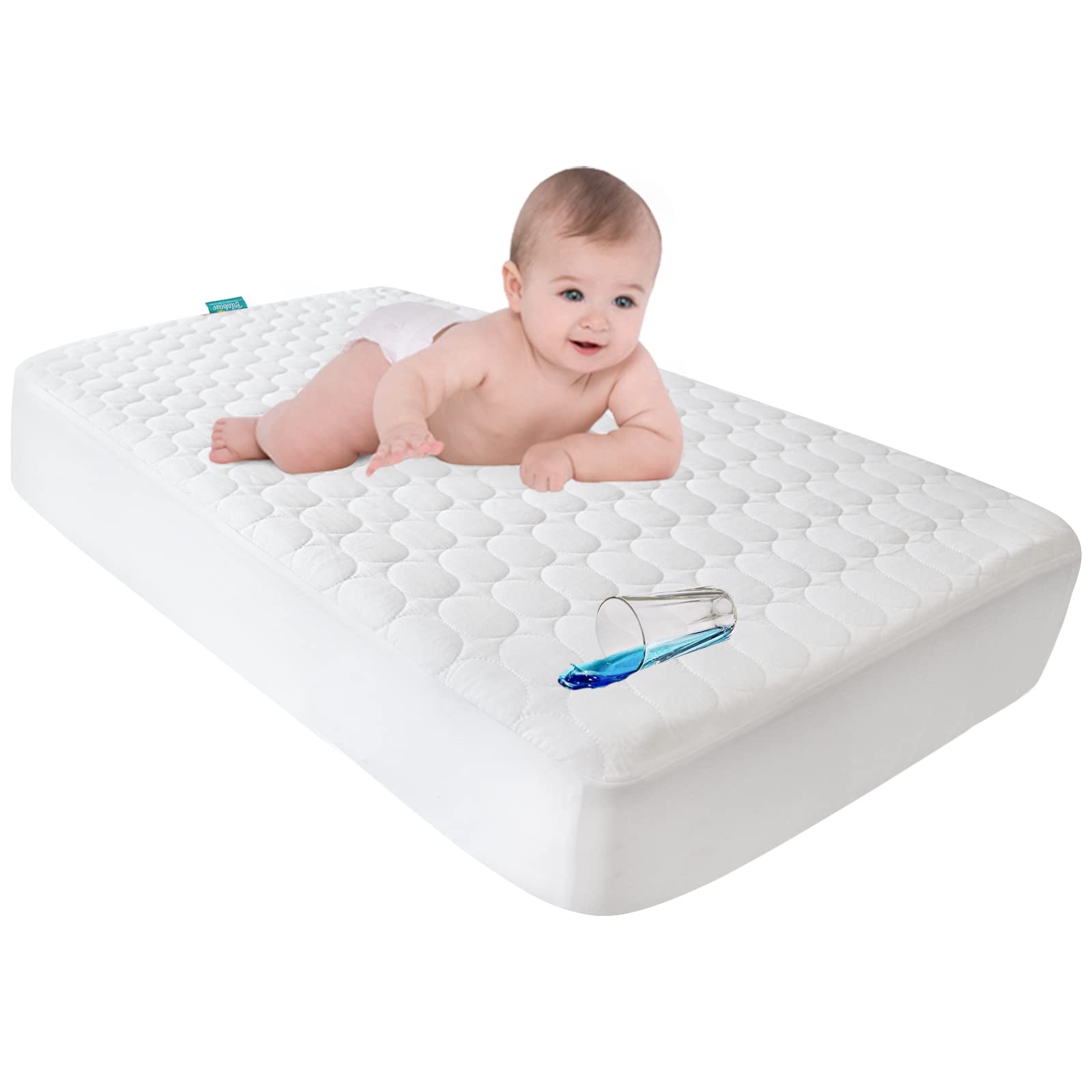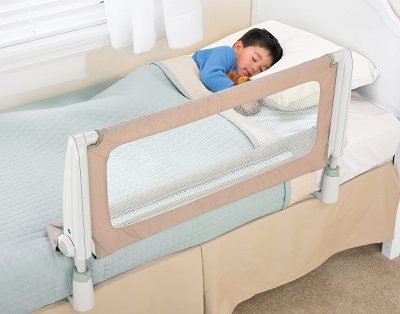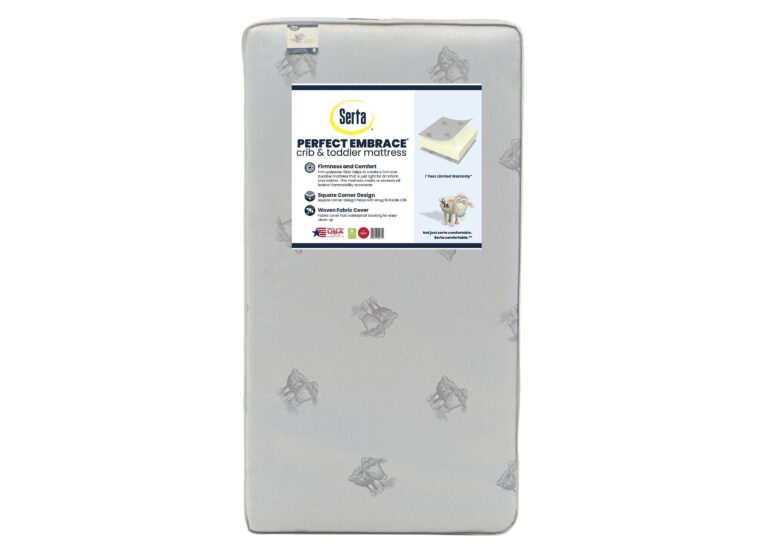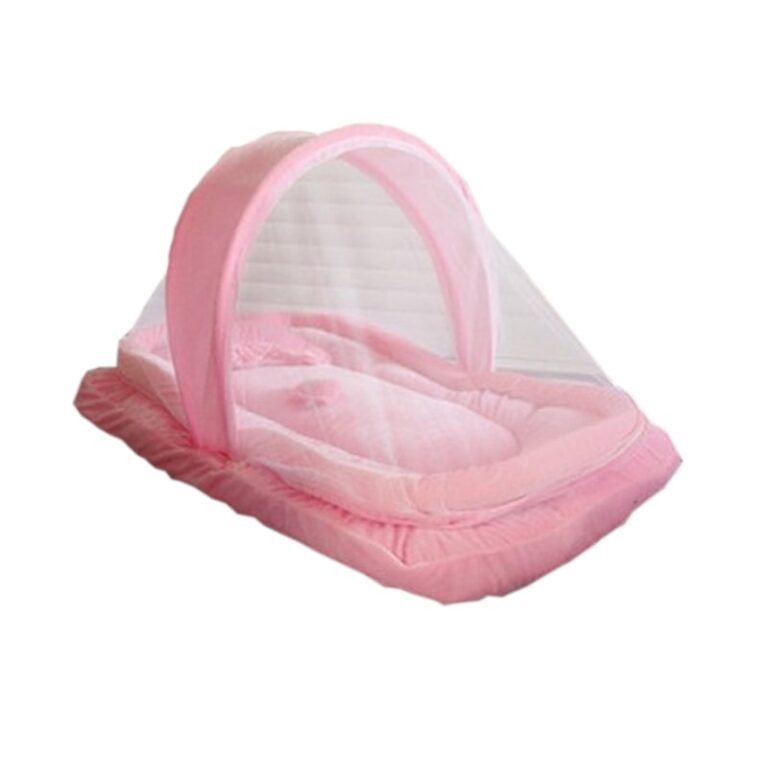Do You Need a Crib Mattress Protector?
Yes, you need a crib mattress protector. A crib mattress protector acts as an extra layer of protection between your baby and the mattress, helping to keep it clean and hygienic for longer. It also helps protect against liquids such as spit-up or diaper leaks that can seep into the mattress and cause damage or odors.
Additionally, a waterproof cover can help block dust mites and other allergens from collecting on the surface of the mattress. Crib mattresses are expensive so taking steps to ensure they last longer is worth it in the long run!
If you are a new parent, or have an infant in your home, investing in a crib mattress protector is essential. Not only will it help to keep the mattress clean and free of germs and bacteria that could cause harm to your baby, but it can also extend the life of the mattress itself. Crib mattress protectors provide additional padding for your little one while they sleep, ensuring their safety and comfort as they rest.
Are Mattress Protectors Safe for Babies
Mattress protectors are a safe and effective way to keep babies’ mattresses clean and free from dust, dirt, bacteria, mold, and other allergens. They also provide an extra layer of protection against bedbugs or other pests that may be living in the mattress. Mattress protectors come in various materials such as vinyl, cotton terry cloth, and even organic fabrics which are all hypoallergenic.
This makes them ideal for babies who have sensitive skin or allergies.
Crib Mattress Pad Vs Protector
A crib mattress pad and protector both serve the same purpose, which is to protect your baby’s crib mattress from potential spills or other accidents. The main difference between a pad and a protector is that pads are made of thicker material for cushioning, while protectors are more waterproof and designed to keep liquids away from the mattress itself. Crib mattress pads are usually made of soft fabric like cotton or polyester, while protectors tend to be plastic-based materials like vinyl or TPU (thermoplastic polyurethane).
Pads also come in different types such as quilted, terry cloth, flannel, etc., whereas protectors typically have no decorative features. Ultimately the choice comes down to personal preference; however if you’re concerned about keeping liquids away from the mattress then opting for a protector may be your best option.
How Many Mattress Protectors Do You Need for Baby
For newborns and infants, it’s important to protect their mattresses with a mattress protector. To ensure total coverage, you should get two mattress protectors for your baby’s crib – one for the bottom of the mattress and one for the top. This will provide an additional layer of protection from liquids, dust mites and other allergens that can cause irritation to your little one’s skin.
Waterproof Crib Mattress Cover
A waterproof crib mattress cover is an essential item for any nursery. It helps to protect your baby’s mattress from accidental spills and diaper leaks, while also keeping it clean and hygienic. Made of durable fabrics such as polyester or vinyl, these covers are designed to be easy to use and wash, so you can keep your little one safe and comfortable every night.
Best Crib Mattress Protector
A crib mattress protector is an important accessory for protecting your baby’s mattress from liquids, dust mites, and other allergens. The best crib mattress protectors are made of a soft breathable material like cotton or bamboo that is waterproof yet still allows air to circulate. They should also be easy to clean and machine washable for convenience.
Investing in one of the high quality crib mattress protectors on the market will ensure that your little one has a safe sleeping environment free from harmful substances.
Best Waterproof Crib Mattress Pad
The best waterproof crib mattress pad is designed to keep your baby’s bedding dry and comfortable, even during the night. This type of mattress protector uses a special fabric that is both waterproof and breathable, which allows air to circulate while still keeping out any liquids or spills. It also helps protect against dust mites, allergens, and other irritants that can cause skin irritation.
The added protection from this pad ensures your little one will have a safe and comfortable sleep environment each night.
How Many Mattress Pads Do I Need
When it comes to mattress pads, the answer to “How many do I need?” depends on your individual needs. Generally speaking, one pad is enough for most people, but if you’re looking for extra comfort or insulation from allergens and dust mites, two might be necessary. Additionally, look into waterproof mattress covers if you tend to sweat in bed or have pets that like to sleep with you.
Ultimately, the type of mattress pad and number of them needed will depend on what kind of protection and comfort you seek from your bedding.
How Many Crib Mattress Pads Do I Need for a Year
Having a spare mattress pad is important to ensure your baby’s sleep environment remains comfortable and clean. To be safe, it’s recommended that you have two crib mattress pads for each year of use: one on the bed and one in the wash. This will allow you to keep one clean while having a back-up available when necessary.
Additionally, if you plan on using your crib until your child transitions into a toddler bed or another type of bed, then having at least three mattress pads can make sure that you are always prepared with a fresh option for your little one’s sleeping needs.

Credit: www.halosleep.com
Do Babies Need Mattress Protectors?
It is essential for parents to consider the safety of their babies when it comes to sleeping. A mattress protector can provide an extra layer of protection and help keep your baby’s mattress clean and dry. Not only do they protect against spills, sweat, drool, and other accidents that may occur during sleep, but they also help reduce allergens like dust mites in the bedding.
Additionally, a mattress protector can extend the life of your baby’s mattress by protecting it from dirt and wear-and-tear that can come with regular use over time. When looking for a protective cover, be sure to find one made from breathable materials so as not to trap moisture or heat near your baby while they sleep. Furthermore, look for waterproof covers that are easy to wash after any messes have occurred – this way you don’t have to worry about replacing a damaged or stained mattress every time something happens!
All in all, using a mattress protector is an important part of keeping your little one safe and comfortable during their sleep at night – making it well worth the investment!
What Happens If I Don’T Use a Mattress Protector?
If you don’t use a mattress protector, your mattress will inevitably become stained with dirt and body oils over time. This can be hard to clean off, and it can also attract dust mites, which can cause allergic reactions both in the form of allergies as well as asthma. Dust mites are tiny creatures that feed on dead skin cells found in bedding and mattresses.
A mattress protector helps to keep these away by providing a barrier between the mattress and any potential allergens like dust mites, pollen or pet dander. Without this protection, your mattress is vulnerable to all sorts of debris that accumulates over time and may even start to smell bad if left untreated for an extended period of time. Additionally, using a protective cover on your mattress will help preserve its lifespan since it prevents wear-and-tear from daily activities such as sitting or sleeping on it regularly.
All in all, not using a mattress protector could result in an uncomfortable sleep space filled with allergens that lead to health issues for you and your family members who share the bed!
Do Crib Mattresses Need to Be Waterproof?
Crib mattresses are designed to provide comfort and safety for babies, so naturally it is important to choose one that is suitable for your needs. Choosing a waterproof crib mattress can help protect your baby from any potential hazards caused by moisture or spilled liquids. Waterproofing helps prevent mold, mildew, and bacteria growth on the surface of the mattress as well as helping keep it free from moisture that could otherwise lead to an uncomfortable sleep environment.
Additionally, having a waterproof crib mattress means you won’t need to worry about finding new sheets after every accident since they will be easily wiped up without any damage done to the mattress itself. Not only does this save money in replacing bedding but also provides peace of mind knowing that there won’t be any lasting damage due to spills or accidents while your baby sleeps. In conclusion, when considering what type of mattress might be best for your little one it’s important to consider whether waterproofing would be beneficial given their age and level of development.
What Do You Need on Top of a Crib Mattress?
When it comes to ensuring your baby is getting a good night’s sleep, one of the most important things that you need on top of any crib mattress is a waterproof mattress protector. Not only will this help keep their bedding dry and free from bacteria, but it also helps prevent allergens like dust mites from settling in and becoming an issue for your little one. On top of the mattress protector, you should also make sure there’s some kind of breathable layer between the mattress itself and the baby.
This could be something like a thin wool or cotton blanket or even a natural latex pad which will provide some cushioning without making them too hot during the night. Lastly, don’t forget to dress your crib with soft organic sheets so your baby can rest comfortably all night long!
Do I Need a Crib Mattress Protector?
Conclusion
In conclusion, a crib mattress protector is an important purchase for any nursery. It provides protection from liquids, dust mites and allergens while giving your baby a soft and comfortable surface to sleep on. With so many options available in different fabric types, sizes and thicknesses, there is sure to be the perfect one for you.
Investing in quality materials that are durable enough to last can help ensure your little one’s safe sleep environment.








